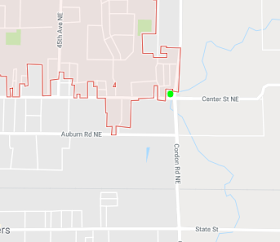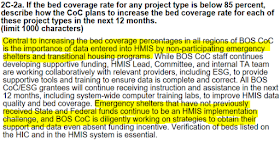Revised: December 2018
By Sarah Owens and Michael Livingston
[Originally posted under the title, "HBSS Takes Request to Council."]
 |
| Delana Beaton, Lorrie Walker, Verena Wessel at City Council |
November 14, 2016. Three members of the Home Base Shelters of Salem (HBSS) board of directors went before City Council last night during the period for public comment to ask the City to "identify a parcel of [city-owned] land most appropriate for a...supervised temporary camp" for people experiencing homelessness, and "in navigating the potentially complex zoning/ordinance/licensing issues" that would have to be resolved in order to move forward with such a project.
Delana Beaton (HBSS President), Lorrie Walker and Verena Wessel and others formed HBSS in the summer of 2016 for the purpose of developing a sanctioned camping program modeled on Eugene's "
Rest Stops." We first reported on HBSS's project in "Mayor Rants re Failure to Plan for Homeless." (14 August 2016).
The group's appearance at Council follows private meetings with Council members and others to share an initial draft proposal, which Delana said they've been revising as they go. The women fielded questions from Councilors Andersen, Lewis and McCoid and said they'd be back in 2017 with a "formal" request. A copy of HBSS's proposal can be found with the
October minutes of the South Central Association of Neighbors.
 |
| Dan Bryant giving the tour |
Earlier on Monday, staff and officials from Polk County, among others, visited
Opportunity Village in Eugene, and a couple of camps developed under Eugene's "
Rest Stop" program, on which the HBSS project proposal is based. All members of the Task Force were invited to go (transportation provided), but only Commissioner Wheeler, Sheriff Garton, and Heidi Mackay (all of Polk County) participated.
At the first stop, Opportunity Village CEO Dan Bryant told the group about the Village's history and evolution, the role that the Eugene City Council played in the process and the Village's gradual acceptance into the community. The group also spoke briefly with the villager on gate-duty and, once inside the gate, one or two of the other villagers.
 |
| A Eugene "Rest Stop" |
The next visit was to a camp run by Community Supported Shelters (CSS) (they call their camps "
Safe Spots"). Residents sleep in conestoga huts or tents on platforms. The camp had recently acquired a metal hut and a wood stove to use as a common area. Previously, residents gathered around a barrel fire in the center of the camp (under the chair in the photo at left). Winter conditions at the camps are described in detail in this CSS
blog.
There's plenty of information about Square One Villages and the Eugene Rest Stop program at the links, so we won't repeat it.
On the ride back in Polk County's all-purpose bus, people shared impressions, questions and concerns, including the "potentially complex zoning/ordinance/licensing issues" that would arise if they wanted to do something similar in Polk County or West Salem (whether or not on publicly owned land). Given HBSS was already working on a project, it was generally agreed that anyone interested in a West Salem project should pursue a partnership with HBSS.
 |
| Entrance to Opportunity Village |
|
On November 21, Delana and HBSS board member Susan Smith told Ken Adams on
Willamette Wake Up that their goal was "not to become an uninvited project in a residential area." The first camp would have a maximum of 20 tents with "matching tarps, so not unsightly at all" and serve a "totally unserved group" within the homeless population, of which there were "about 2,000 in Salem last January." They said they anticipated expanding to four or five camps, eventually, and that they hadn't yet decided on the criteria for excluding an applicant based on criminal history. They said "hopefully, the City is organizing itself around the Task Force" and that their camp was "the first step." Delana as much as said that the program was consistent with the Housing First principles espoused by
Tanya Tull.
 |
| "I think where we start having problems is where it starts being tents" |
On December 1, 2016 the Mid Willamette Homeless Initiative Task Force considered a
recommendation to "analyze the advisability of allowing, supporting or facilitating some form of temporary, support-coordinated camping", which Keizer Mayor Cathy Clark said would cause her to get "pushback" (even though the recommendation was merely to "analyze"). She said she needed to understand how such a program would be effective in moving people into stable housing, that she'd not seen it be effective in other "jurisdictions." She said, "I have a very difficult time saying yes -- this is something we should spend some time exploring at this point."
 |
| Sharon Heuer, Greg Hansen in the OV kitchen |
Marion County Commissioner Janet Carlson observed that "there's camping and then there's camping" and said that "this item is probably as close as we're going to get" to addressing homelessness in the short term.
Marion County Sheriff Myers said "we should at least explore it", and Salem Police Chief Moore concurred, saying, however, "it's not an endorsement." (It's no secret that Salem police foresee problems with sanctioned camping.)
Salem Mayor-elect Bennett said the City had been asked to find "unused land" of a certain type, and, so far, the City had not been able to find any, but that they would know "by January" for certain.
 |
| Opportunity Village cul de sac |
Bennett indicated the City would next look at acquiring property suitable for "some kind of Opportunity Village" program, and that he did not object to the recommendation as long as it "doesn't say 'camping in tents', as long as it's 'camping' in something" short of "formalized housing." He said, "I think where we start having problems is where it starts being tents, and in almost anybody's neighborhood."
In the end, the Task Force recommendation was amended to replace the word "camping" with the word "shelter."
On December 20, HBSS members met with the City Manager Steve Powers, who told them that the City did not have any property/parcels that would be suitable for their project.
 |
| Another Opportunity Village cul de sac |
On December 31, the
Statesman Journal reported on an interview with Bennett. The section on "Tackling Homelessness", read:
By a Mid-Willamette Valley Community Action Agency count in January 2016, there were more than 850 homeless people in Polk and Marion counties.
“We know what doesn’t work – all we have to do is look at Portland and Eugene and we can see examples of unsuccessful strategies,” Bennett said, citing “camp-where-you-want” spaces.
 |
| Outside the Rest Stop for Veterans |
“I’m not sure tent camps work. My impression is they don’t,” he said. "I have yet to get a positive report on a tent camp." * * * “This is a complicated issue. This is not something that’s gonna be fixed by something simple,” he said.
The County told HBSS much the same thing, according to Marion County Commissioner Janet Carlson's oral report at the February 15, 2017 meeting of the Marion County Board of Commissioners.
That same day, Mayor Bennett announced an aggressive
new homeless initiative, one designed to house the chronically homeless -- in something other than tents.
HBSS adjusted its strategy. According to a flyer advertising a talk by Delana in February 2017, HBSS was "rebranding" as "a group dedicated to developing micro-housing."
HBSS published a summary of its new plan the first week in March, 2017. [http://www.homebaseshelters.org/executive-summary]. The website was taken down shortly thereafter and was not put back up. HBSS's new plan said they'd identified "
a prospective village site in Marion County outside high-density urban residential neighborhoods and retail commercial areas" and expected to have the ARCHES Project staff "identify highly vulnerable persons from the unsheltered population using a standard vulnerability assessment tool." Delana told us the new plan should not have been published and declined to answer questions about it. We heard nothing about the HBSS plan for the next ~18 months.
In September 2018, Bob and Cindy Francis presented a plan for a "Habitat & Hope Village" to the Mid Willamette Homeless Initiative Steering Committee (including Salem Urban Development Department Director Kristin Retherford, Marion County Commissioner Janet Carlson, and Keizer Mayor Cathy Clark).
The plan called for 8x8 duplex construction of lumber/plywood (basically two wooden tents side by side), to be constructed as funds come available, up to a maximum of 20. The proposal indicated HBSS was involved in the planning, but did not identify project leadership, members or partners, and no funding source was identified. The steering committee seemed unimpressed.
In December 2018, the
"Habitat & Hope Village" project reappeared as an "Affiliated Ministry" of
the Unitarian Universalist Congregation of Salem, located at 5090 Center Street (intersection with Cordon Road).
According to the blurb on the UUCS website, the units would now have electricity and heat, the ARCHES Project (Mid Willamette Valley Community Action Agency [MWVCAA]) would be responsible for screening and "case work", and UUCS would provide volunteers, financial support and land (1/2 acre across the street, currently a parking lot) (green dot on map at right).
The project would take two years to complete. MWVCAA, the congregation and the County would have to agree formally to support the proposal.
In a January 10, 2019
radio interview, four members of the Habitat & Hope Village board of directors (Delana Beaton, Bob Francis, Gregory Greg and Larry Nassett) told a credulous Melanie Zermer that The ARCHES Project "has pledged to provide case management for the residents", that they plan to acquire the land (which they would not identify) by May, then begin to fund raise and secure the necessary land use designations, even as they acknowledged that they lack government and community support.
MWVCAA's Executive Director, Jimmy Jones, would not confirm that the ARCHES Project was going to "provide case management." "Referral only", he told us.
The
Habitat and Hope Village website, which came on line some time in April (?) 2018, drops the reference to case management. According to the website, villagers must have a SPDAT score between 0-4 at entry, which is a basically a no-housing-intervention-indicated rating (don't really need case management -- the program will serve only those who could rehouse on their own). "The city will not let us build", Greg Gregg, wrote recently, without further explanation. The group subsequently changed their project design from a village to a group home for five women. As of the end of 2019, the project remained in very early stages. Details
here.
2019 Ends with Frantic Search for Camping Alternative
On December 2, 2019, the City Council delayed enactment of Ordinance Bill 10-19 (mainly a camping ban at that point) two weeks to allow staff time to identify City property that might be suitable for a camping program that had yet to be designed. The policy shift appears to have been intended as an answer to constituent concerns about where the campers around The ARCHES Project would go once the camping ban took effect. See News from the Continuum and Brynelson, T. "Salem bans open camping, and now seeks a place to host it." (December 3, 2019, Salem Reporter); Bach, J. "Salem may set aside City property for homeless." (December 2, 2019, Statesman Journal.)
Councilor Chris Hoy subsequently notified colleagues he would be moving to direct staff to investigate and report on car-camping options at the next meeting on December 9. See Bach, J. "Homeless car camping plan considered by Salem city councilor." (December 5, 2019, Statesman Journal.) Brynelston, T. "Salem official eyes organized camping for people who live in vehicles." (December 6, 2019, Salem Reporter.)
With just days to adjust to the sudden policy shift, staff scrambled to explore options. At the request of MWVCAA's Jimmy Jones, code enforcement agreed not to declare the camp around ARCHES a public nuisance, although it qualified as such. See "Will Code Enforcement Trump Council?" and Bach, J. "Downtown Salem Homeless Camp to get portable toilets, hand washing stations." (December 5, 2019, Statesman Journal.)
Staff set up informational meetings with Councilors Nordyke, Kaser, Hoy, and Andersen. Management staff, police, Salem Housing Authority and MWVCAA all tried to dissuade them from what they considered an ill-advised and impracticable course of action. Nevertheless, by week's end, they were still determined that the City should allow camping somewhere, despite having no viable plans/programs, professional support or funding. Monday, December 9, 2019, staff published a report and recommendations clearly intended to chill enthusiasm for the idea. Estimated cost to operate one site 24/7: ~$1M/year. At the meeting, a majority of Council seemed willing to pay for six months, but for the fact it would take 60-90 days to organize. They opted instead to expand two of the warming centers (First Presbyterian and Church at the Park) to a duration model (open every night, regardless of temperature), at a cost of $213K. Nordyke, Kaser and Andersen told Salem Reporter a campground could still be considered at a later date. See Brynelston, T. "Salem leaders decide to shelter homeless instead of setting up public camping." December 9, 2019, Salem Reporter.) Camping ban went into effect December 16. See "Camping Ban for Christmas" (21 December 2019) (with updates describing how the plan to expand the warming centers fell apart); "'Things are getting much worse'" (7 January 2020) (describing the situation downtown under the camping ban); "Council Throws ARCHES Under the Bus" (14 January 2020) (Council's blame shifting for camping ban disaster); "City Pleads with Pringle Hall Neighbors" (17 January 2020) (SCAN NIMBYs low-barrier shelter); "Council Declares Unsheltered Emergency, Now What?" (23 January 2020) (allowing car camping program); "Council Votes to Keep Camping Ban Intact, Bring Back Sit-Lie" (10 February 2020) (rejecting Councilor Andersen's motion to lift the camping ban outside downtown, residential areas and parks); "Has Councilor Flipped on Organized Camping?" (8 March 2020) (Nordyke's inconstancy); "COVID-19 Returns Campers to City Parks" (21 March 2020); "Has Council 'moved the needle' on Homelessness?" (2 May 2020) (complaints about camping in the parks); "News from the Continuum" (2 August 2020) (staff report on camping in the parks); "Council & Park Camping Tensions" (28 October 2020) (Hoy suggests Council should reconsider organized camping, Mayor says no); City to Extend Park Camping to June 2021" (4 December 2020); "Park Camping to Continue for Now" (7 Jan 2021).





















